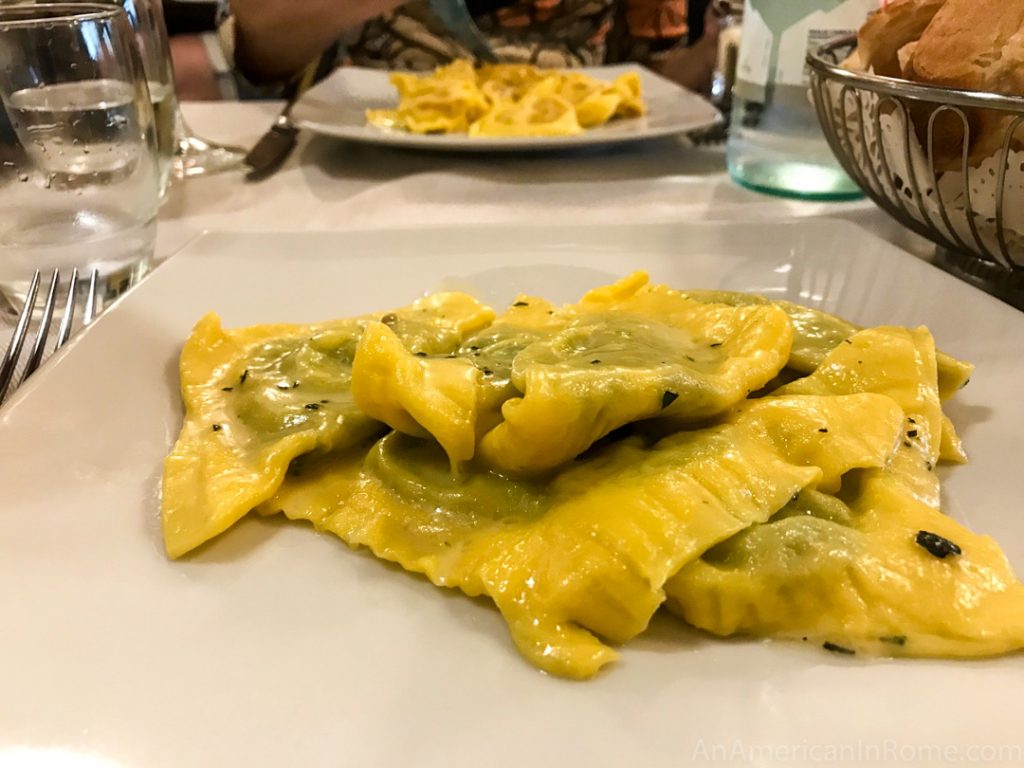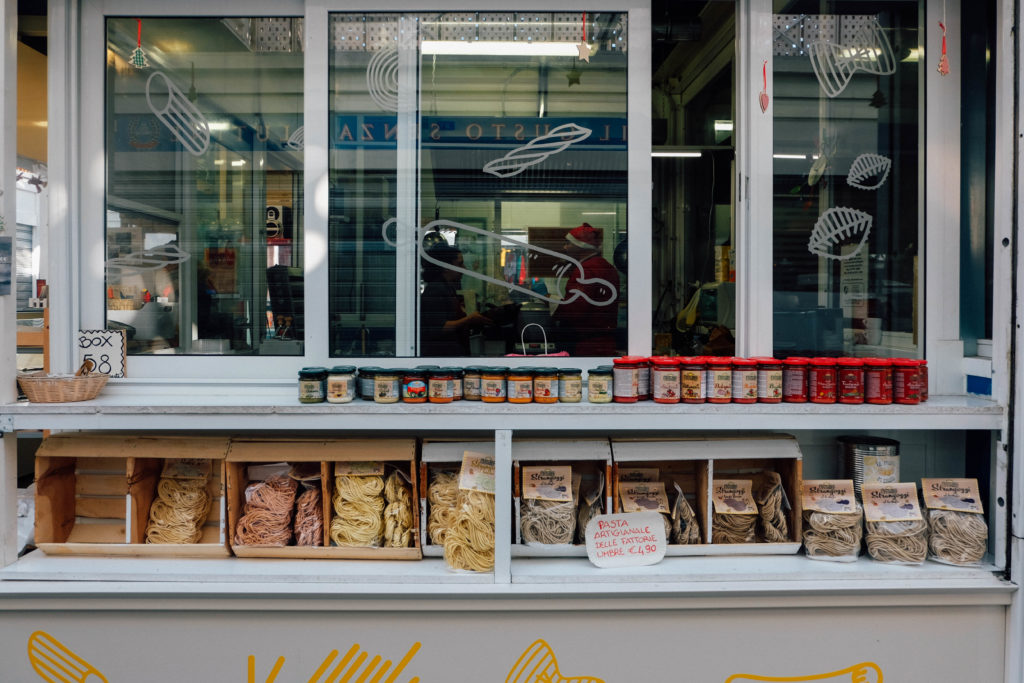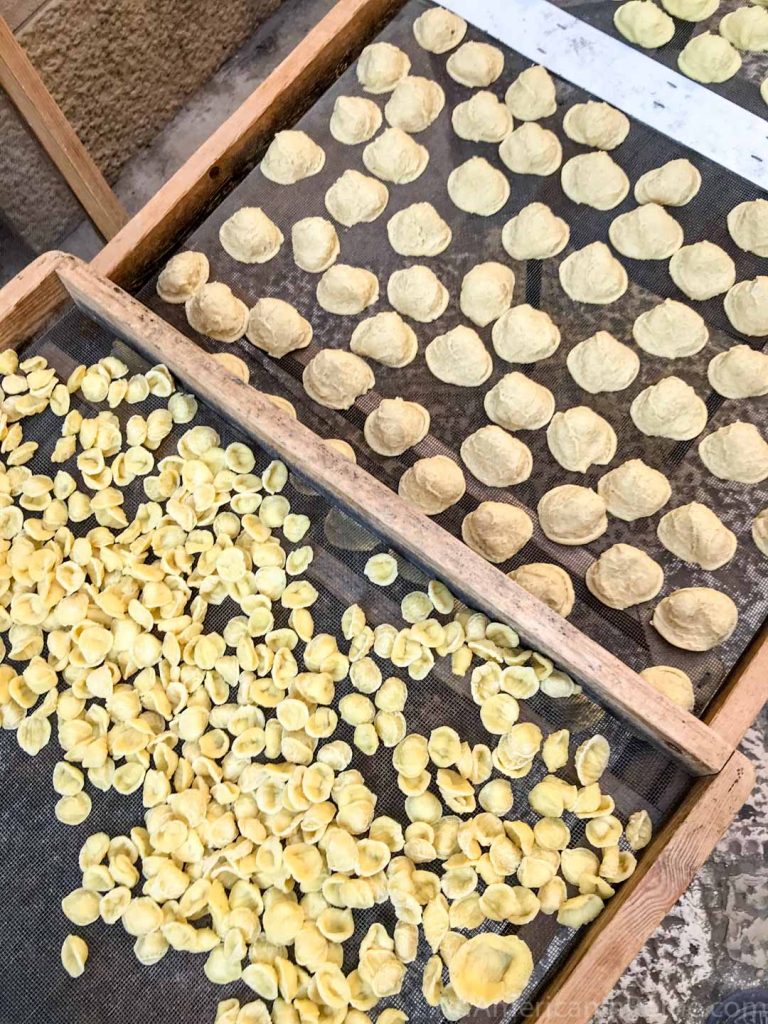I used to believe that fresh pasta was somehow better than dried pasta. However, living in Italy has proven to be a lesson in many things – and fresh pasta is simply different than dried and each has its beloved place in various recipes. Just know that the idea that fresh pasta is superior is a common misconception.
At the end of the day, the basic ingredients of both fresh and dried pasta are flour and water. Fresh pasta also often contains egg (but not always – and dried pasta can ALSO have egg…. Confused yet??)
The choice of pasta depends largely on the sauce. When it comes to recipes, the shape and the type of pasta used (fresh vs dried) are always determined by how you will dress the dish. And the sauces often depend on geography.
Traditionally, the north of Italy has historically been richer than the south. With large areas of fertile farmland in the north, it was more common for eggs to be available. In the more arid south, the space for farmland and the resources to raise livestock and poultry would have been more limited.

Thick, fresh pasta like tagliatelle or pappardelle covered in a meat sauce such as ragù or filled fresh pasta stuffed with ricotta (another luxury) was invented in the north.
Silky fresh pasta often goes well with butter-based sauces – which are also more common in the north! We are speaking of the land of Parmigiano-Reggiano, where cows have abundant grassland to make milk for both cheese and butter. Fresh pasta also goes better with cream or dairy-based sauces.*
In the south, butter (and thus butter-based sauces) are almost unheard of. And in fact, dried pasta is usually the better pasta to pick for oil-based sauces. And the south of Italy produces some delicious olive oil!
The shape often matters more for the “correct” serving of the sauce, than if the pasta is fresh or dried. However, keep in mind that it is often harder to get perfectly al dente pasta with fresh pasta because its softer texture cooks so quickly!

Ultimately, it’s up to you! And if you are drawn to fresh pasta, look for recipes that call for it.
Know that every Italian household has plenty of dry pasta on hand, though! It’s not inferior. But buying high-quality dried pasta will make a difference in the final dish.

Look for dried pastas that:
- Use bronze extrusion- this gives a great texture for the sauce to “cling” to.
- Are dried slowly. Again, this contributes to the final texture and how well it will cook. The town of Gragnano is famous for its drying technique (and blessed with an ever-present wind that is well suited to drying pasta!). Afeltra and Rigorsa are two good examples.
- Find heritage wheat brands like Bona Fortuna when you can. A lot of Italian pasta is made with imported wheat. This ensures that the local pasta is made with local grains!

*Remember – there is NO CREAM IN CARBONARA. Roman carbonara is made with pecorino, egg yolk, guanciale and some pasta water to make the sauce. So we use dried pasta! Here is more about the pasta you should eat in Rome.






to be honest fresh , egg containing, pasta is popular in northern italy mostly because durum wheat is not commonly cultivated there – the soil prefers soft wheat which requires some addition likewise eggs to be worked properly as a flour. On the contrary in southern italy durum wheat, which is stronger, ie, richer in proteins, is preferred as it does not need any addition to have its flour worked properly. Historically the difference between north and south is that north become more widespread industrialised as middle class grew while southern italy preferred to have few big landlords in an aristocratic (thus somehow decadent) but less industrialized and more agricultural economic enviroment
Thanks for this! I hadn’t considered the soil/varieties